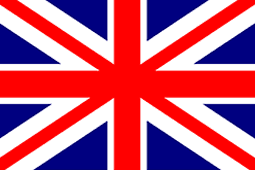Best Foraging Books UK: 5 Guides and Where to Buy in 2025
Best Foraging Books UK: 5 Guides and Where to Buy in 2025
Keen to bring home more than muddy boots, but not sure which foraging book to trust? UK foragers face a minefield: US‑leaning titles, dated taxonomy, vague photos, and guides that skip vital lookalike warnings. Add in seasonal timing, the ethics and legalities of picking, and the choice between a rucksack‑ready pocket guide and a deep‑dive home reference—then try finding a copy that’s actually available to buy in 2025—and it’s easy to stall before you’ve picked a single leaf.
This guide does the legwork. We’ve shortlisted five proven UK titles that balance safety, clarity and usefulness in the field: from month‑by‑month planning to mushroom‑specific identification, hedgerow staples and city‑friendly finds. For each book you’ll see why we rate it, what you’ll learn, who it suits, and where to buy it this year (including new, used and direct‑from‑publisher options). The aim is simple: help you choose the one that fits your walks, your pack and your budget—so you can forage with confidence. First up, the seasonal classic many UK foragers rely on.
1. The Forager’s Calendar by John Wright
Written by River Cottage forager John Wright, this month‑by‑month guide is a staple in UK packs because it tells you what’s prime to pick and when. It reads well, flags hazards clearly, and pairs identification notes with kitchen‑ready ideas—one reason it regularly tops lists of the best foraging books UK readers rely on.
Why we rate it
Wright’s seasonal layout helps you plan trips around peak windows, not guesswork. It’s engaging yet cautious, with practical ID pointers, ethical notes and recipes for each featured species—useful whether you’re skimming before a walk or swotting at home.
- Season‑first structure: Species grouped by peak months to focus your hunts.
- Practical safety: Clear “what to avoid” and conservation‑minded advice.
- Cook it tonight: Simple recipes alongside each entry keep finds usable.
- Easy to read: Warm tone without dumbing down.
What you’ll learn
Expect a clear sense of timing and place: where plants and fungi turn up, how to recognise them, and how to handle, store and cook them. Wright also drops in memorable projects—think tapping birch, making rosehip syrup or even a hop omelette.
- When and where: Peak months and typical habitats.
- Confident ID: Key features and common confusions called out.
- Use and storage: How to keep, prep and cook your haul.
- Ethics and law: Sensible guidance on responsible picking.
Who it’s best for
It’s ideal if you’re starting out or want structure to your year, and great for walkers who like a target list before heading out. Mushroom specialists may still want a dedicated fungi guide alongside it.
- Beginners and improvers: Build safe habits fast.
- Seasonal planners: Month‑by‑month checklists that actually work.
- Home cooks: Recipes matched to each species keep waste low.
Where to buy in 2025
It’s widely available new from major booksellers, including Amazon and Bookshop.org, with frequent availability as a used copy via general second‑hand marketplaces. If you’re undecided, check your local library first, then buy the edition you prefer once you’ve tried it.
2. Wild Food UK Foraging Pocket Guide (Wild Food UK)
If you want something you can actually carry and consult on the path, this is the no‑nonsense pocket pick. The Wild Food UK Foraging Pocket Guide packs 352 pages and covers 120+ UK species of tree, plant and mushroom, making it one of the most practical best foraging books UK walkers can keep to hand.
Why we rate it
The compact format and clear, UK‑specific entries make quick confirmations easy when you’re among hedgerows or woodland. It’s focused, field‑first and keeps you moving rather than thumbing through essays.
- UK‑specific scope: Over 120 species of British trees, plants and mushrooms.
- Compact “pocket” format: Designed to be carried and used outside.
- Field‑ready entries: Short, clear notes that speed recognition.
- Season and habitat cues: Helps you look in the right place at the right time.
What you’ll learn
You’ll build fast recognition of common British wild foods across habitats, plus when they peak and simple ways to use them once home. It’s a confidence booster for on‑the‑spot checks.
- ID basics: Key features to recognise each species.
- Where to look: Typical habitats and growth patterns.
- When to pick: Seasonal windows at a glance.
- Simple uses: Straightforward handling and kitchen ideas.
Who it’s best for
Perfect for walkers and campers who want a pocket check rather than a heavy reference, and for beginners who need a reliable second opinion in the field.
- Day‑pack foragers: Quick lookups without the bulk.
- Beginners and families: Clear guidance that builds safe habits.
- All‑rounders: One guide for mixed hedgerow, meadow and woodland finds.
Where to buy in 2025
Best availability is direct from the publisher’s store (Wild Food UK). You’ll also often find new or used copies via general online booksellers and marketplace sites, with occasional stock in outdoor and countryside retailers.
3. Edible Mushrooms by Geoff Dann
If your goal is safe, confident mushroom ID, this is the heavyweight reference UK foragers keep returning to. Frequently recommended as a top mushroom title, Edible Mushrooms is written from a forager’s perspective, with meticulous identification detail, robust lookalike comparisons and honest warnings about edibility—spread across a substantial 528 pages.
Why we rate it
Dann focuses on practical field recognition and the reality of risk. Entries compare edible species directly with their toxic or inedible doubles and explain how to tell them apart, which is exactly what most mushroom hunters need. It’s thorough without fluff, and deliberately light on recipes so the space goes into safety and accuracy.
- Forager-first approach: Real‑world ID and usage, not lab jargon.
- Lookalike clarity: Poisonous confusions are highlighted with how‑to‑separate tips.
- Depth and nuance: Risk levels and edibility notes reflect lived experience.
- Serious scope: A substantial reference you’ll keep consulting.
What you’ll learn
You’ll build species‑level confidence: key visual features, habitat and season cues, and crucially, how to distinguish edible targets from similar dangerous fungi. Expect plain‑spoken guidance on how edible a species really is, plus sensible handling and prep notes.
- Reliable ID: Caps, gills/pores, smell, stature and spore‑level cues.
- Where and when: Habitat and season patterns to narrow the search.
- Safety first: Detailed lookalike breakdowns and toxicity context.
- Practical use: Preparation and handling guidance once identified.
Who it’s best for
Ideal for improvers and committed beginners who want one trusted mushroom reference rather than a dozen tabs open. It pairs well with a pocket guide for quick checks on the path.
- Cautious newcomers: Learn safe decision‑making habits.
- Improvers and group foragers: Deepen ID beyond the obvious.
- Home reference users: Best in the bag or car, not the ultra‑light pocket.
Where to buy in 2025
Commonly stocked new at major online booksellers, with plentiful used copies via general marketplaces. If you’re testing the waters, borrow from your local library first, then buy the edition you like for long‑term reference among your best foraging books UK shelf staples.
4. Hedgerow (River Cottage Handbook) by John Wright
This River Cottage Handbook zeroes in on the plants you’ll actually meet on footpaths, field edges and woodland margins. It’s frequently recommended as a reliable, witty UK‑specific field companion and earns a regular spot on lists of the best foraging books UK beginners start with.
Why we rate it
Wright keeps things practical and engaging, focusing on common, high‑confidence species rather than obscure rarities. The guidance is clear, sensible and easy to apply on real walks.
- Common‑sense scope: Concentrates on everyday hedgerow edibles you’ll genuinely find.
- Readable but rigorous: Friendly tone without skimping on safe practice.
- Field‑friendly: Compact handbook format that suits rucksack use.
What you’ll learn
Expect straightforward identification, habitat tips and how to use your pick in the kitchen. It’s not a botanical key; it’s a get‑out‑and‑gather guide that nudges you toward responsible habits.
- Recognise staples: Hawthorn, elder, nettle, rosehip and other regulars.
- Where and when: Pathside habitats and seasonal timing that pays off.
- Use it well: Simple prep ideas and storage pointers.
Who it’s best for
Perfect if your foraging happens on weekend rambles and you want confidence with the classics. Improvers will appreciate its breadth as a hedge‑to‑table refresher.
- New foragers: A gentle, trustworthy hedgerow starter.
- Walkers and families: Ideal for path‑side browsing with kids.
- Cooks: Solid, no‑fuss ways to turn finds into food.
Where to buy in 2025
Look for new copies via major booksellers and the River Cottage shop, with used editions widely available on general marketplaces. Libraries often carry River Cottage handbooks if you want to try before you buy.
5. The Urban Forager by Wross Lawrence
City-based and still keen to learn? This stylish, practical guide proves you don’t need ancient woodland to bring home dinner. Professional forager Wross Lawrence focuses on 32 easy‑to‑find plants common in urban areas, then shows you exactly what to cook with them—making it a smart pick among the best foraging books UK town and suburb walkers can use year‑round.
Why we rate it
It meets you where you live: streets, parks, canal paths and communal greens. Entries are concise, confident and UK‑specific, and the recipes are genuinely doable the same day you pick.
- City‑first focus: 32 urban species you’ll actually meet on daily routes.
- Recipe‑rich: Think hawthorn‑berry ketchup, nettle ravioli, elderflower fritters and cherry‑blossom shortbread.
- Real‑world context: Clear ID where you’ll forage—verges, gardens, paths.
- Author credibility: Lawrence is a working forager supplying restaurants.
What you’ll learn
You’ll learn to spot, pick and use urban edibles safely, with practical tips on habitats, timing and simple kitchen wins that fit weeknights.
- Recognise urban staples: Nettles, elderflower, hawthorn, cowslip and more.
- Where to look: Parks, verges, canal towpaths and green edges.
- Seasonal prompts: When each species is at its best.
- Cook it now: Straightforward recipes that respect fresh flavours.
Who it’s best for
Perfect for flat‑dwellers, commuters and families who want results close to home, and a great companion to broader hedgerow or fungi titles.
- City and suburb foragers: Make use of everyday green spaces.
- Beginners and busy cooks: Low‑faff recipes build confidence fast.
- Weekend wanderers: Slips neatly into a daypack for quick checks.
Where to buy in 2025
Widely available new via major booksellers (including Amazon and Bookshop.org), with frequent used copies on general marketplace sites. Many UK libraries stock it too—borrow first, then buy if it earns a place on your shelf.
Final thoughts
Pick the book that fits how and where you walk, then get outside. Pair a seasonal planner like The Forager’s Calendar or Hedgerow with a pocket guide for on‑the‑spot checks; add Geoff Dann’s Edible Mushrooms if fungi are your focus, or The Urban Forager if your haunts are parks and towpaths. Borrow first if you’re unsure, then buy the edition you’ll use, and always cross‑reference IDs, respect access rules and harvest lightly.
Finally, set yourself up for relaxed, repeatable days out: a comfortable daypack, a notebook, and water you’ll actually drink. When you’re ready to roam, gear up for your next forage—bags, bottles and useful tech that make miles easier—so the only tough choice is what to cook when you get home.















